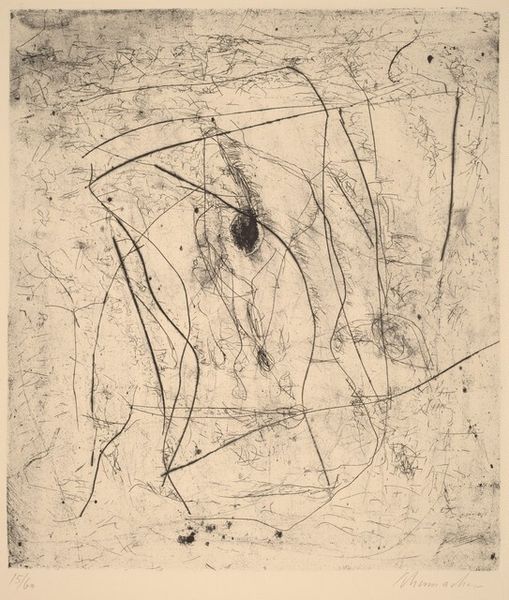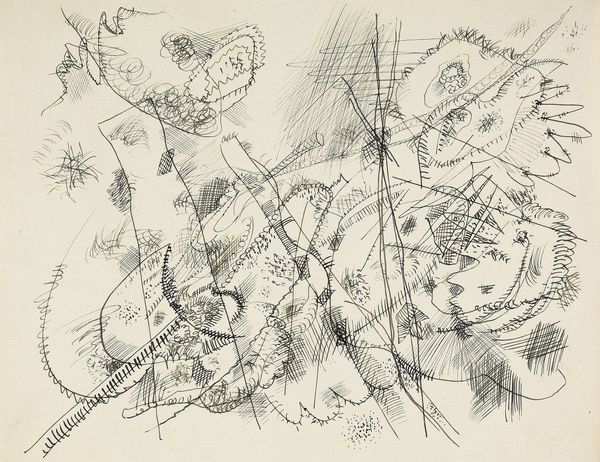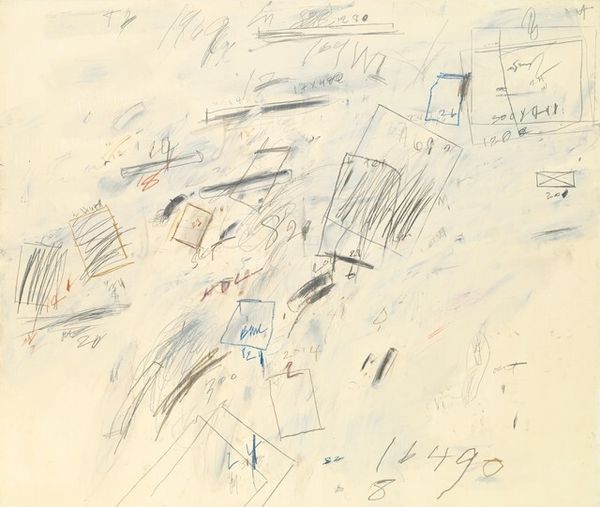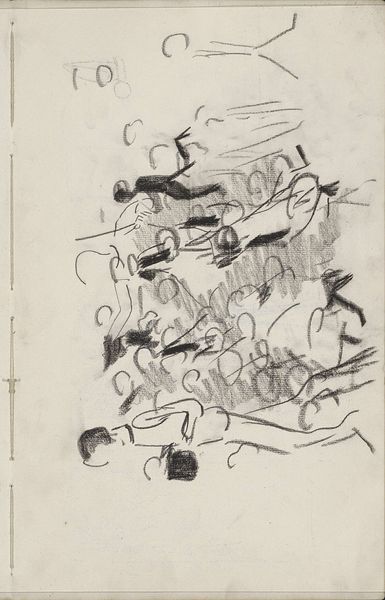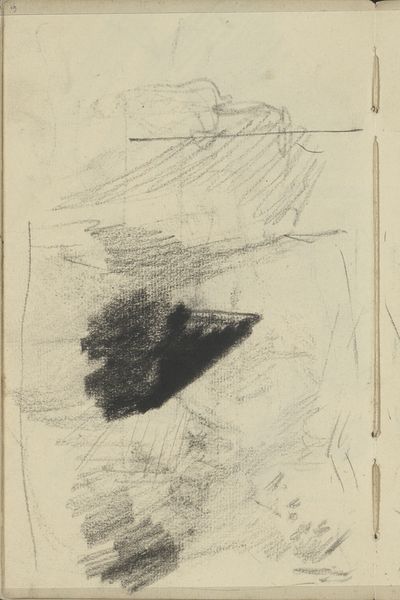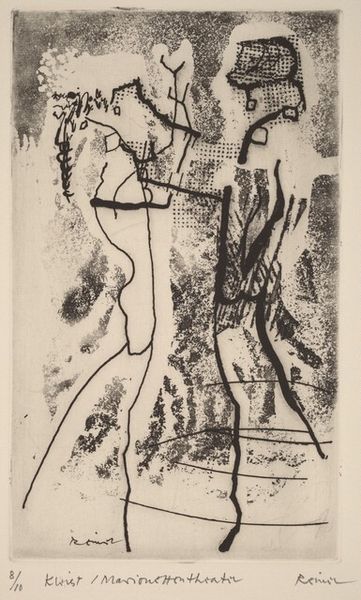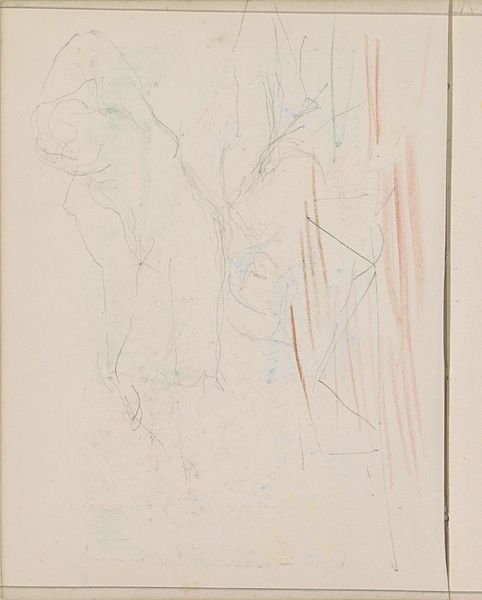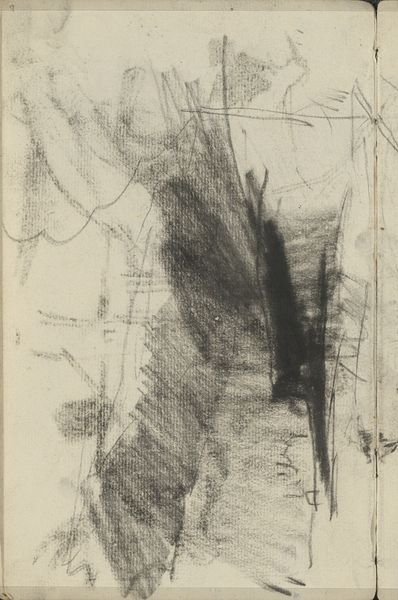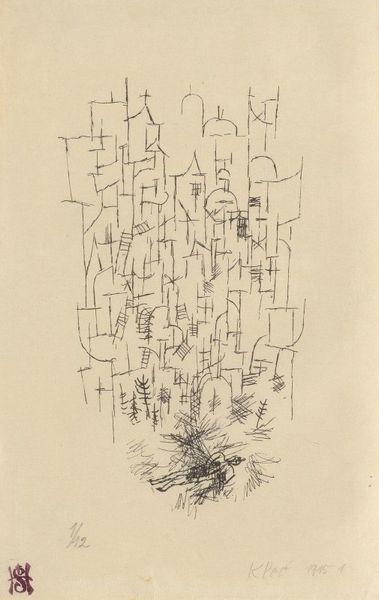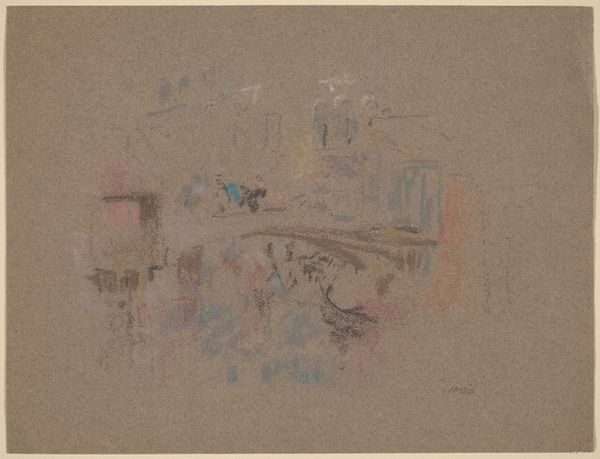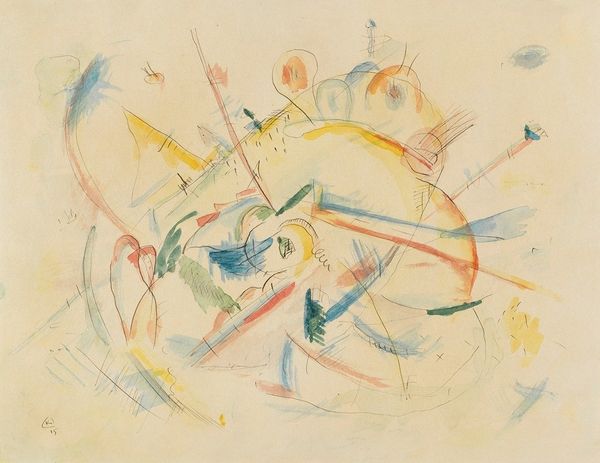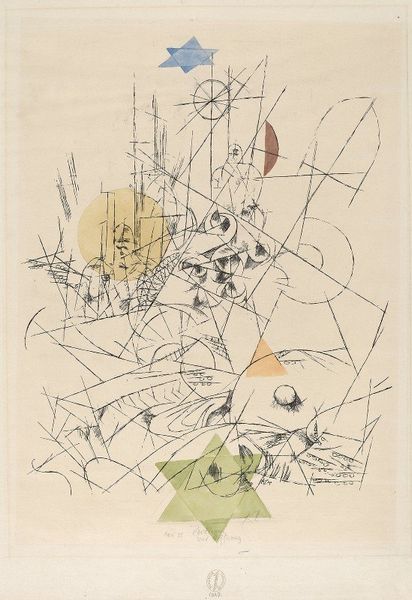
drawing, paper, ink, pen
#
portrait
#
drawing
#
figuration
#
paper
#
ink
#
pen-ink sketch
#
sketchbook drawing
#
pen
#
watercolour illustration
#
genre-painting
Dimensions: overall (approximate): 40.4 x 29.7 cm (15 7/8 x 11 11/16 in.)
Copyright: National Gallery of Art: CC0 1.0
Curator: Imre Reiner's pen-and-ink drawing, "A Duel," created in 1932, depicts exactly that: two figures locked in combat. Editor: My first impression is that the overall mood strikes me as surprisingly elegant, despite the inherent violence. It’s as if Reiner captured the choreography rather than the brutality. Curator: Precisely. Observe how Reiner uses swift, almost scribbled lines to define form, eschewing solid volumes for a kinetic suggestion of movement. Consider, too, how the washes of red and blue introduce chromatic fields that seem almost independent of the figurative elements, playing on the tensions between spontaneity and deliberation. Editor: I see how the sketchy quality and delicate washes convey a sense of a memory or perhaps even a dream rather than a depiction of an actual event. Duels often serve as stand-ins for a deeper conflict. Maybe it's not about physical violence at all, but an abstract confrontation. The setting seems like a theater, suggesting performance. Curator: That's an interesting interpretation, one which lends itself nicely to our structural understanding of oppositional dynamics. Structurally, the piece divides neatly: active figures versus passive onlookers; saturated colors offset by linear precision. Editor: Note the small figures perched above the central arch, perhaps an audience in a theater box? That adds another layer of complexity. They may represent societal approval of the duel, maybe an affirmation of masculine identity, perhaps a silent cheer to test the courage and skill displayed. Curator: Let’s consider the work through semiotics, too. What system of signs is being deployed, and to what end? The swords, undeniably phallic, become representative of masculine strength. Yet they are thin, brittle lines—an almost satirical take on power? Editor: Definitely a possibility. This artwork encapsulates a societal fascination, a culturally acceptable confrontation governed by strict codes, traditions, and symbols to embody or justify power or challenge it. A theater piece, as I said, but in the end deadly. Curator: A deadly piece where execution is the primary form of interpretation. The more we discuss, the more compelling these stark contrasts become. Editor: Indeed. The apparent simplicity belies layers of meaning—a reflection of the duels themselves, perhaps.
Comments
No comments
Be the first to comment and join the conversation on the ultimate creative platform.
